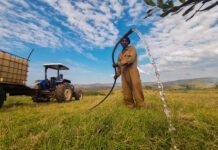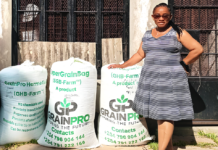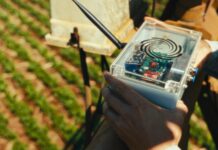Food inflation accelerated for the third consecutive month in April 2025 underpinned by a sharp uptick in the meat category. South Africa’s annual food inflation jumped by 1.1 percentage points (ppts) from March to 3.3% year-on-year (y/y) in April 2025.
Monthly pressure saw food inflation increasing by 1.3% month-on-month (m/m) April relative to 0.2% m/m in March 2025. Meanwhile, headline inflation nudged 0.1ppts to 2.8% y/y with monthly pressure of 0.3% m/m on the back of contributions from the food and non-alcoholic beverages category.
After trending flat below 1% for past seven months, meat inflation surged by 2.6ppts from March to 3% y/y in April 2025. Monthly, meat inflation jumped from -0.3% m/m in March to 2.3% in April 2025 which is the highest level eighteen months. A drilldown into the meat category shows the biggest increase in beef with brisket and chuck both posting the biggest increase of 10.2% y/y followed by rump steak at 8.8% y/y.
We have already observed this advance in meat prices especially in the beef category with average class A beef carcass prices reaching a monthly record of R63.42/kg in April 2025. In the live market, weaner calf prices rebounded strongly to a 29-month high of R37.41/kg live weight.
However, disease outbreaks are now complicating the price outlook and the domestic supply dynamics. We are currently grappling with the foot‑and-mouth (FMD) disease outbreak while Brazil, our biggest supplier of poultry meat, has an outbreak of the avian influenza disease. The FMD-induced ban on meat from cloven-hooved animals from important markets may cause a short-term supply increase, and together with the seasonal downturn in demand during the colder winter months will curtail further price increases.
The potential decline in Brazil imports due to the bird flu poses an upside risk for poultry prices, but so far, indications are that domestic suppliers are geared to raise output and further source from other regions to fill the gap.
Despite edging 0.5ppts from March to 4.8% y/y in April 2025, the bread and cereals inflation still does not fully reflect the elevated raw commodity prices with average maize and wheat prices up 5% and 3% y/y respectively at just over R5,100/ ton and R6,290/ ton. The near-term domestic supply tightness helped maintain prices on the upside, however, the harvest outlook has improved with an expected decent crop of 14.66 million tons as per the National Crop Estimates Committee’s 2025 third production estimates. Maize futures have since declined with the Jul-25 white maize down by almost a R1,000/t from the current levels around R4,200/t. We observe a similar trend on the international market with limited upside for wheat and rice.
Vegetable inflation strengthened further as expected due to the impact of the earlier inclement weather on harvesting. Fruits and nuts however decelerated to 7.4% y/y from 7.9% previously, and were still in negative territory monthly at -2.1% m/m. Downside risk for fruits and nuts are due to the improved supply outlook.
Nonetheless, the combination of the improved domestic and global harvest outlook and a renewed rand exchange rate appreciation poses a downside risk to most agriculture commodities for the year ahead. Further, the weak economic growth prospects and consequently timid consumer buying power will limit upside pricing








